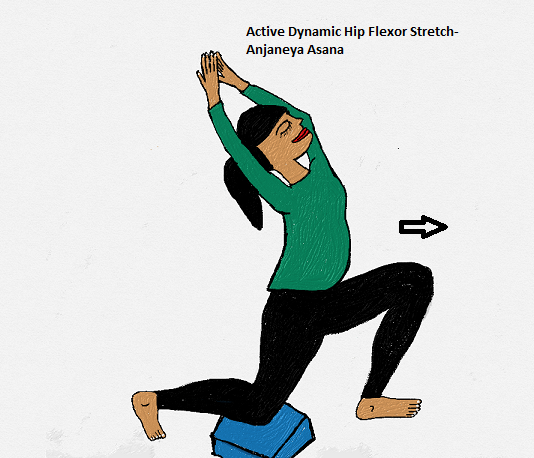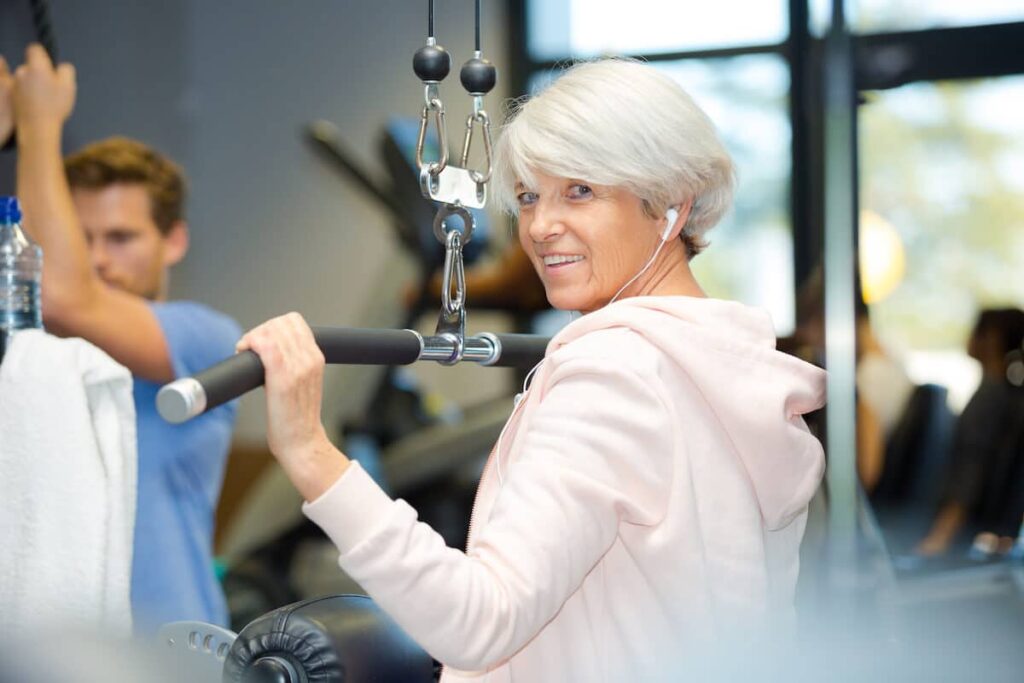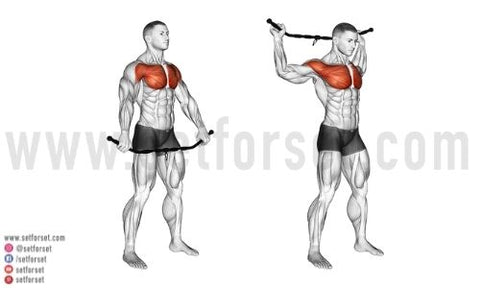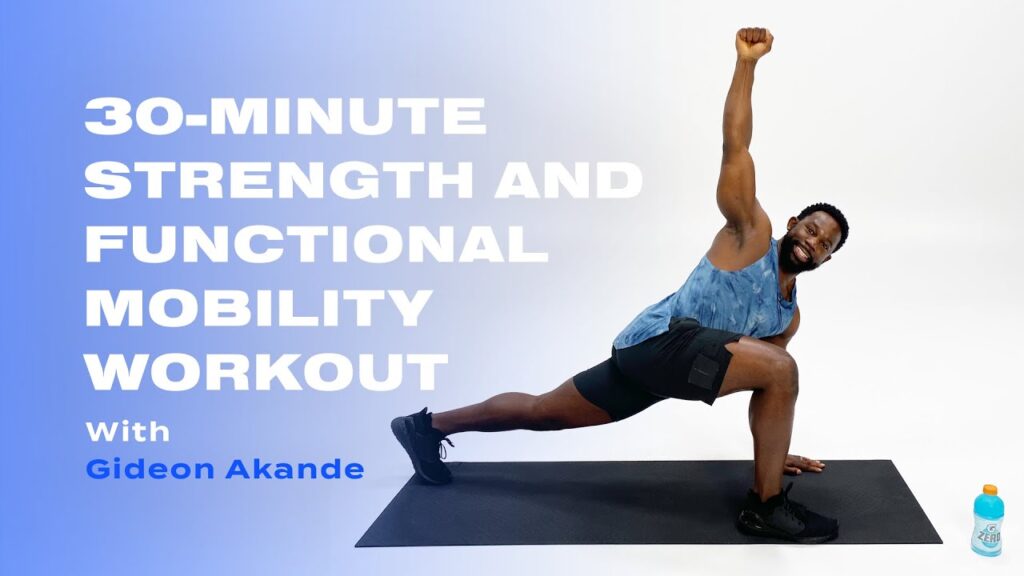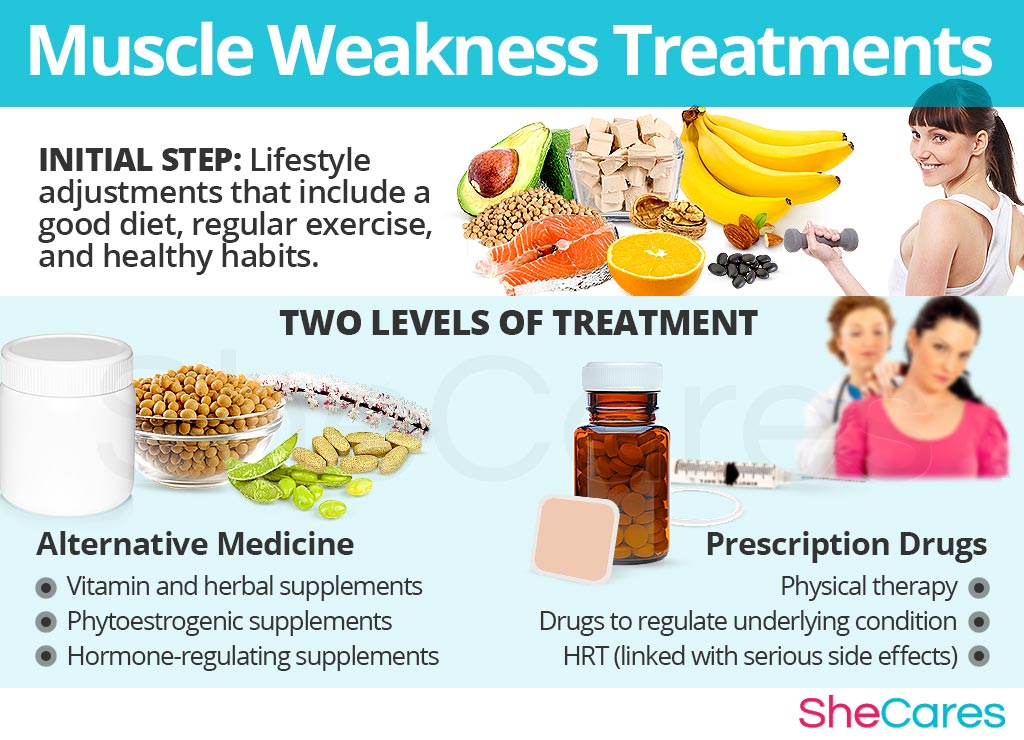Stretching pec muscles improves flexibility and reduces tension. It enhances posture and prevents shoulder injuries.
Pectoral muscles, located in the chest, play a crucial role in upper body movement. Stretching these muscles can alleviate tightness, improve range of motion, and enhance overall posture. Regular stretching helps prevent shoulder injuries and promotes better alignment. Simple stretches like doorway stretches or chest expansions are effective and easy to incorporate into daily routines.
Consistent stretching can lead to improved flexibility and reduced muscle soreness. Incorporating these stretches into your fitness routine will yield noticeable benefits in your upper body strength and mobility. Always ensure proper form to maximize benefits and avoid injuries. Regular practice can lead to long-term muscle health and overall well-being.

Credit: www.saintlukeskc.org
The Importance Of Pec Flexibility
Pec muscles play a big role in daily tasks. They help in lifting and pushing objects. Flexible pecs reduce the risk of injuries. Stretching these muscles can improve posture. It can also make breathing easier by opening up the chest.
Athletes need flexible pec muscles. This flexibility enhances movement range. Better range of motion can improve performance in sports. Stretching the pecs can prevent muscle strains. It also helps in faster recovery after workouts.
Anatomy Of The Pectoral Muscles
The pectoralis major is the largest chest muscle. It helps move the shoulder and arm. The pectoralis minor is a smaller muscle. It sits under the pectoralis major. This muscle helps with breathing and moving the shoulder blade. Both muscles are important for upper body strength.
Strong pec muscles can improve posture. Weak pec muscles can cause rounded shoulders. Stretching these muscles helps keep them flexible. Flexibility in pec muscles can help prevent injury. Good posture can reduce back and neck pain.
Common Tightness And Imbalances
Poor posture can lead to tight pec muscles. Sitting for long periods can also cause tightness. Weak back muscles are another reason. Lack of stretching and exercise makes it worse. Overuse in sports can strain the pec muscles. A sedentary lifestyle contributes to the problem.
A rounded shoulder posture is a key sign. Neck and shoulder pain often accompany it. Limited shoulder movement is another clue. Sometimes, the chest feels tight or sore. Look for uneven muscle development in the chest and back.
Preparation For Pec Stretches
Start with light cardio exercises like jogging or jumping jacks. This helps to increase your heart rate. Spend about 5 to 10 minutes on these activities. Your muscles will get warm and ready for stretching. This prevents injuries and improves flexibility.
Always wear comfortable clothing. Avoid any tight or restrictive outfits. Make sure to breathe deeply and stay relaxed. Never force a stretch. Listen to your body and stop if you feel pain. Keep hydrated by drinking water before and after stretching.
Static Stretching Techniques
Stand in a doorway. Place each arm on the door frame. Your elbows should be at a 90-degree angle. Step forward with one foot. Feel the stretch in your chest. Hold for 30 seconds. Switch legs and repeat.
Lie on your back. Extend your arms to the sides. Keep your palms facing up. Press your lower back to the floor. Hold the position for 30 seconds.
For another variation, lie on your stomach. Place your arms in a T-position. Lift your chest slightly. Feel the stretch in your pec muscles. Hold for 30 seconds.

Credit: myrehabconnection.com
Dynamic Stretching For Pecs
Stand tall with feet shoulder-width apart. Swing both arms forward in a circle. Increase speed gradually for a better stretch. Repeat this movement for 30 seconds. This exercise helps warm up the pec muscles.
Start with feet together. Clasp hands behind your back. Lift your hands while pushing your chest forward. Hold this position for 10 seconds. Release slowly and repeat three times.
Incorporating Props And Tools
Resistance bands help to stretch your pec muscles effectively. You can use them to add tension and improve your stretching routine. Hold the band with both hands and pull it outwards. This action will stretch your chest muscles. Do this for 10-15 seconds. Repeat it a few times for best results.
A foam roller can release tightness in your pec muscles. Lie down on your stomach and place the foam roller under your chest. Roll back and forth slowly. This will massage your muscles and help them relax. Spend about 1-2 minutes on each side. This will make your muscles feel looser and more flexible.
Stretching Routines For Different Levels
Start with easy stretches. Use a doorway to help stretch your pec muscles. Stand in the doorway. Place your arms on the frame. Gently lean forward. Hold for 20 seconds. Repeat 3 times. Another option is the wall stretch. Place your hand on the wall. Turn your body away. Feel the stretch in your chest. Hold and repeat.
Try a foam roller for deeper stretches. Lie on your back. Place the roller under your spine. Extend your arms to the side. Let gravity pull your arms down. Hold for 30 seconds. Repeat 3 times. Another method is the resistance band stretch. Secure the band to a stable point. Hold the band with your hand. Step forward. Feel the stretch in your chest. Hold and repeat.
Integrating Pec Stretches Into Workout Regimen
Start with gentle pec stretches. This helps warm up muscles. Hold each stretch for 20 seconds. Repeat twice. Avoid bouncing during stretches.
Cool down with static pec stretches. This reduces muscle stiffness. Hold each stretch for 30 seconds. Repeat three times. Deep breathing improves the stretch effect.
Monitoring Progress And Adjusting Techniques
Setting clear goals helps track progress. Start with small goals. Aim to stretch a bit more each week. Keep a journal of your stretches. Note how your muscles feel. Adjust your goals as you improve. Celebrate small wins. This keeps you motivated.
Sometimes routines need changes. If you feel pain, stop and rest. Listen to your body. Modify stretches for better comfort. Try new techniques for better results. Ask a trainer for advice. Keep your routine fresh and fun.
:max_bytes(150000):strip_icc()/PectoralMuscleStretch_annotated-1c8225b20bd94b36b90f1a6718651986.gif)
Credit: www.verywellfit.com
Frequently Asked Questions
How To Loosen Tight Pectoral Muscles?
To loosen tight pectoral muscles, try stretching exercises, foam rolling, and regular massages. Focus on maintaining good posture and staying hydrated.
Is It Good To Stretch Your Pecs?
Yes, stretching your pecs is beneficial. It improves flexibility, reduces muscle tightness, and enhances posture. Regular stretching can prevent injuries and aid muscle recovery.
What Causes Tight Pecs?
Tight pecs are caused by poor posture, overuse, lack of stretching, and muscle imbalances. Regular exercise and proper stretching can help.
How To Stretch The Upper Pec?
To stretch the upper pec, try doorway stretches. Stand in a doorway, arms at shoulder height, and lean forward. Hold for 15-30 seconds. Repeat.
Conclusion
Stretching pec muscles can enhance flexibility and reduce tension. Regular practice promotes better posture and prevents injuries. Incorporate these stretches into your routine for optimal chest health. Consistency is key to reaping the benefits. Start today and feel the difference in your upper body strength and comfort.



